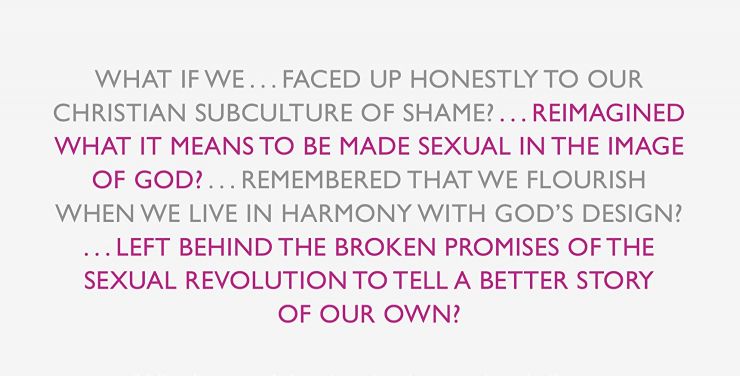Review – A Better Story: God, Sex and Human Flourishing

This important recent book by Glynn Harrison (IVP, 216pp, £9.99) is reviewed here by Norman Wells, Director of the Family Education Trust.
‘In the space of just a few decades the Christian moral vision, which had buttressed the ancient institutions of marriage and family for centuries, effectively collapsed’ (p.xiv). So writes Professor Glynn Harrison in the introductory chapter of this stimulating and challenging critique of contemporary Western culture in relation to sex and relationships.
Professor Harrison, who formerly served as Professor of Psychiatry at the University of Bristol, where he was also a practising consultant psychiatrist, provides an overview of the history of the sexual revolution and outlines a biblical response. He writes against a background in which Christians who adhere to an orthodox view of sexual morality feel overwhelmed and in which many Christian leaders are afraid to address the issues. By ‘orthodox’, he means those who hold to the following propositions:
- God intended marriage as a lifelong commitment between one man and one woman.
- Marriage isn’t simply a human arrangement, but something sacred in God’s eyes.
- God himself joins a man and woman together as ‘one flesh’.
- This understanding prohibits all forms of sexual activity outside the marriage bond. (p.xvi)
He argues that evangelicals have been caught napping by the scale and speed of change. In a relatively short space of time, we have gone from occupying the cultural mainstream to being viewed as an ‘immoral minority’. Professor Harrison writes that, ‘The experience of being an immoral, as well as a cognitive, minority creates an overwhelming pressure to conform’ (p.77). A Better Story has been written to help such believers relate their convictions to the challenges of the sexual revolution.
The book consists of three parts. In Part 1, ‘A better understanding’, Professor Harrison argues that Christians are struggling and failing so badly in the wake of the sexual revolution because we are not thinking. We have not grasped the ideological coherence of the sexual revolution or mounted an effective intellectual engagement with it. We have also failed to grasp that the revolution has a positive moral vision of its own and we need to grasp the central role of narrative in winning hearts and minds. Part 2, ‘A better critique’, proceeds to consider how thoughtful, biblically-minded Christians should respond to these challenges and begin a critical engagement. Finally, in Part 3, ‘A better story’, Professor Harrison urges Christians to recover our confidence and communicate a better narrative with conviction and vision. Each chapter concludes with a helpful summary of ‘key ideas’ contained within it.
The sexual revolution
The sexual revolution is defined as ‘the overturning and liberalisation of long-established social and moral attitudes to sex that began in Western culture in the 1960s and continues to the present day’ (p.3). Professor Harrison identifies two major causes and then analyses the ideology of the revolution, with a particular focus on radical individualism, which he describes as ‘a modern form of ancient Gnosticism’ (p.23). He writes:
Gnosticism is about discovering, and then expressing, the ‘inner you’ hidden beneath layers of cultural and religious control. The new Gnosticism says people act properly – that is, authentically – when they freely express their inner true self. The rejection of external authority and the free expression of sexual interests become a kind of moral good and source of flourishing (p.23).
To modern Gnosticism is attributed the successful erosion and dismantling of marriage as a divine institution, the deconstruction of the family and the cultural dominance of the idea that ‘just being yourself’ is the road to success (p.19).
A chapter devoted to the moral vision of the sexual revolution draws on the moral foundations theory of the American social psychologist Jonathan Haidt in his book, The Righteous Mind: Why Good People Are Divided by Politics and Religion. Haidt theorises that our intuitive reactions to moral questions tend to operate along six basic psychological systems, or foundations. People on the political liberal left give more weight to individual needs and concerns such as care, fairness and oppression, whereas people who are more socially conservative or from non-Western cultures place a greater emphasis on general principles that bind people together, such as loyalty, authority and sacred values. Professor Harrison observes that:
[The] cultural shift away from ‘general principles’ to individualistic moral reasoning has been one of the greatest achievements of radical individualism over the past half-century, and nowhere more so than in the field of sexual ethics… (p.37).
The entertainment industry was ‘probably the revolution’s most effective tool of cultural subversion’ (p.42). Scriptwriters pitted hypocritical politicians and fossilised bishops against brave men and women finding the courage to be ‘who they really are’, and the real-life heroic narratives of ordinary people battling for their freedom were used to embed the stories of the revolution into popular culture.
While the sexual revolution promised so much in terms of freedom, flourishing and wellbeing, it has failed to deliver. The radical individualism at its heart has led to a higher proportion of people living alone and higher levels of loneliness which have undermined community cohesion. Professor Harrison observes that: ‘idols always ask for more and more, but give less and less, until in the end they have everything and you have nothing. And so it is here’ (p.121). Children in particular have suffered:
The revolution’s ambition for childhood appears to be a confused mixture of near-obsessive… requirements for more safeguarding and endless calls for more ‘sex education’ that nobody quite knows how to define. Sadly, the revolution has little positive vision for what a good childhood looks like and seems extraordinarily adult-oriented in its preoccupations (p.98).
A better story
As the title of the book suggests, its central burden is to urge Christians to construct a new narrative, presenting a Christian vision for sex and marriage. Professor Harrison argues that if we are to win hearts and minds we need not more facts, but a better story. He suggests five core convictions that form the foundational pillars for our story:
- God has spoken: you don’t have to figure it all out for yourself.
- God welcomes you into a reality of his making, not yours.
- We flourish as human beings when we work with, rather than against, the grain of God’s reality.
- God not only reveals who he is, but he reveals who we are as well.
- No matter what happens, God is good. (pp.126-133)
In his own two-page outline narrative, Professor Harrison encourages Christians to confess to a deficient and sub-Christian view of sex, to express gratitude to the sexual revolution for being a wake-up call, to point out the failure of the sexual revolution, to set forth a vision for sex and marriage and to demonstrate that the sacred link between sex and marriage offers the best chance of flourishing for all (pp.180-182).
Many welcome and much-needed insights are scattered throughout the book. There is, for example, a strong emphasis on the way that marriage enshrines a culture of commitment and binds men to their responsibilities for the children they bring into the world:
A society that values strong, committed marriages will, by default, nurture the virtues that are critical to the well-being of children: keeping promises, delayed gratification, commitment for the long haul, a focus on education, the blessings of self-control. We can call this the stability factor… In a culture that values marriage these virtues become embedded in family life and recycled on to the next generation. (p.106)
The point that marriage is not only good for Christians, but good for everybody, and helps to build stronger communities that protect the most vulnerable is made repeatedly. We should therefore not be deterred from having ‘a vision of the ideal and of what works in the best interests of children overall’ (p.104). In the face of all the injustices and inequalities heaped upon them by the sexual revolution, children need to be put back at the centre of our vision for the family. Professor Harrison notes that ‘Beyond vague notions of inclusion and diversity, the revolution seems to have little that is positive to say about the true nature and meaning of sex and sexuality’ (p.113) and comments that our children need a richer moral framework than that.
Questions
With some justification, A Better Story raises some probing, uncomfortable and unsettling questions for evangelical believers. However, at some points it may be wondered whether Professor Harrison cedes too much ground. For example, is it really true to say that ‘Christendom’s dysfunctional attitudes to sex helped create the discontent that triggered the revolution and propelled it forward’ (p.81)? A similar assertion later in the book is also open to question:
Orthodox Christians, with their sub-biblical shame culture, paved the way for much of the sexual revolution. And as the revolution got under way, our cowardly inability to articulate an alternative vision of sexual flourishing remains a continuing source of shame… (p.121)
And is it not a rather sweeping statement to claim that ‘secular culture understands the heart better than most Christians’ and that ‘We should thank God that the sexual revolution has stopped us in our tracks because it brings us face to face with our pastoral poverty and rubs our noses in it’? (p.143)
There is an emphasis on the need to discover a language of fairness, compassion and equality in order to relate to the radical individualism of our age:
We must connect with the individualistic, compassion-driven morality of today’s culture while managing to communicate something about the importance of the big principles that safeguard the many as well as the few. Our narrative needs to engage with today’s moral concerns about equality, injustice and freedom from oppression. (p.180)
However, little explanation is given as to what such engagement might look like in practice. More detail on this point would have been helpful.
At the end of his ‘narrative’, Professor Harrison writes:
While we can’t stop advocating for ways of life that we believe bring flourishing, we won’t try to impose them again, because people must be free to make their own choices. (p.182)
But it is not altogether clear what he means by not trying to ‘impose’ ways of life that bring flourishing. What implications would such a stance have for campaigns seeking to protect children from the normalisation of LGBT lifestyles in Relationships Education lessons in school, for example? Is the ‘narrative’ he presents compatible with a longer-term campaign to repeal the Marriage (Same-Sex Couples) Act 2013 and recover the legal definition of marriage as the lifelong union of one man and one woman? And is it compatible with opposition to same-sex adoption?
Many readers are likely to struggle with the chapter ‘The End of Longing’, sub-titled ‘How our sexual desires connect us with heaven’. Professor Harrison writes that:
[T]he biblical picture of marital sexual union is nothing less than an anticipation of an even deeper union with the Divine. And whether we are married or single in this life, sexual desire is our inbuilt homing instinct for the Divine, a kind of navigation aid showing us the way home. (p.137)
Towards the end of the chapter, having surveyed several passages in which the imagery of bride and bridegroom is employed to represent the relationship between God and his people, he asserts:
[T]he Bible has no problem comparing God’s love with erotic human love. Eros captures the human experience of desire of such force and intensity that we feel almost physically compelled by it… If we want to understand God’s love for us, we are invited to look into the most intimate and private corners of our felt sexuality and cross-refer… [H]uman erotic sexual desire is a picture of God’s love, and we need to look into our sexuality to understand his love fully.
[O]ur erotic experiences of being sexual… are a divine homing instinct for the glorious union that lies ahead.’ (p.146)
Professor Harrison recognises that such thoughts will be uncomfortable for some, but maintains that such discomfort is due to a sub-biblical attitude to the erotic that ‘will not do’ (p.149).
That human marriage is an image of the union between Christ and his church and is intended to display something of the love of the heavenly bridegroom for his beloved is beyond dispute, but as with any biblical imagery, we have to be careful not to press the details too far. Failure to pay due regard to the essential difference between the earthly picture and the heavenly reality can lead to some bizarre and far-fetched interpretations. Berkhof’s observations on typology in general apply equally to the Bible’s treatment of marriage as an image of a far greater union:
To pass from the type to the antitype is to ascend from that in which the carnal preponderates to that which is purely spiritual, from the external to the internal, from the present to the future, from the earthly to the heavenly. (L Berkhof, Principles of Biblical Interpretation, Baker, 1952, p.147.)
The challenge for the church
At several points in the book, the reader may gain the impression that if Christians would only show contrition for past failures and achieve a better balance between caring for individual needs and concerns while holding on to biblically-rooted principles, then we would command much more respect and reverse some of the damaging fallout from the sexual revolution. But in the penultimate chapter, Professor Harrison shows that he does not view the world through rose-tinted spectacles. Before attempting to craft his narrative he injects a note of healthy realism:
We must start by recognising the naivety of believing that, even with the most compelling narrative, this vision will be welcomed in the public square. No matter how winsome, how persuasive, our case, no matter how well we manage to prove its life-giving goodness, standing against the flow always courts rejection. We are fallen, prideful creatures who do not welcome the exposure of sin in their lives. No matter how well we avoid being judgmental, people will feel judged and resentful. That is why Jesus told us to take up our cross and follow him. (p.179)
He rightly emphasises that ‘orthodox convictions around sexual ethics need to be based in reason and calm analysis, not… gut responses driven by fear and disgust’ (p.89) and stresses that it is a mistake to view it as our calling to be ‘orthodox in our doctrine, but liberal in our love’. Truth and grace cannot be separated. Our calling is to be orthodox in doctrine and in love, compassion and grace. Grace accepts us where we are, but it does not leave us there (p.193).
At the personal level, husbands and wives who remain faithful to each other not only bear witness to the love of God, but they put it on display. Single people who abstain from sex outside marriage equally bear witness to God’s faithfulness (p.153), and weddings provide an opportunity to bear cultural witness to the meaning of marriage, with the potential to surprise and inspire (pp.187-188).
Given the power of culture to shape hearts and minds, and given the way that orthodox Christians are increasingly excluded from the public square for their adherence to biblical principles, where should our priorities lie? Should we devote our attention to sustaining our own beliefs within the Christian community (Rod Dreher’s ‘Benedict Option’)? Or should we refuse to be silenced and stand up and be counted, whatever the cost (the ‘Wilberforce Option’). In addressing this question, Glynn Harrison comes firmly down on the side of both, though he suggests that, realistically, in the short term we may need to devote more energy to preserve confidence in our own communities.
All in all, this is a most thoughtful and stimulating treatment of a very important topic. We may not agree with Professor Harrison at every point, but he will not be too troubled by that. He does not profess to have written the last word on the issue. This is ‘simply an introduction’, he writes, ‘There’s much more to do.’ He has written with the aim of making us think, and if this book does that, it will have achieved its purpose.
(This article was originally published in the Affinity Social Issues Bulletin for November 2017. The whole edition can be found here.)
Stay connected with our monthly update
Sign up to receive the latest news from Affinity and our members, delivered straight to your inbox once a month.



